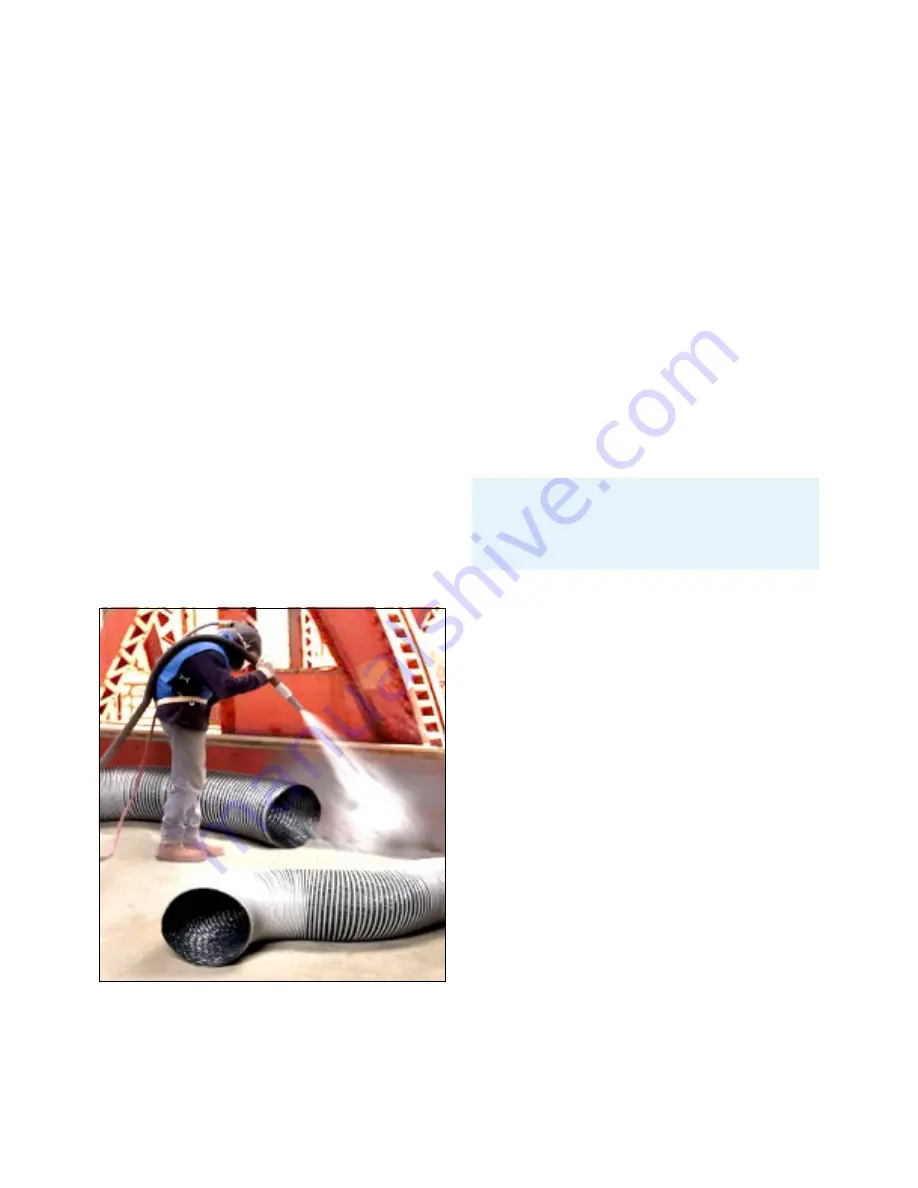
How to Protect Workers from Exposure
to Abrasive Blasting Materials
Each abrasive blasting operation is unique,
involving different surfaces, coatings, blast
material, and working conditions. Before
beginning work, employers should identify
the hazards and assign a knowledgeable
person trained to recognize hazards and
with the authority to quickly take corrective
action to eliminate them. Use engineering and
administrative controls, personal protective
equipment (PPE), including respiratory
protection, and training to protect workers
involved in abrasive blasting activities.
Engineering controls, such as substitution,
isolation, containment, and ventilation are
the primary means of preventing or reducing
exposures to airborne hazards during abrasive
blasting operations. Administrative controls,
including the use of good work and personal
hygiene practices, can also reduce exposure.
When engineering and administrative controls
cannot keep exposures to hazardous materials
below OSHA permissible exposure limits,
respiratory protection must be used.
Engineering Controls
1. Substitution
• Use a less toxic abrasive blasting material.
• Use abrasives that can be delivered with
water (slurry) to reduce dust.
2. Isolation and Containment
• Use barriers and curtain walls to isolate the
blasting operation from other workers.
• Use blast rooms or blast cabinets for smaller
operations.
• Use restricted areas for non-enclosed blasting
operations.
• Keep coworkers away from the blaster.
3. Ventilation
• Use exhaust ventilation systems in
containment structures to capture dust.
Administrative Controls
Perform routine cleanup using wet methods
or HEPA filtered vacuuming to minimize the
accumulation of toxic dusts.
• Do not use compressed air to clean as this will
create dust in the air.
• Clean and decontaminate tarps and other
equipment on the worksite.
• Schedule blasting when the least number of
workers are at the site.
• Avoid blasting in windy conditions to prevent
the spread of any hazardous materials.
Personal Hygiene Practices
• Prohibit eating, drinking, or using tobacco
products in blasting areas.
• Provide wash stations so workers can wash
their hands and face routinely and before
eating, drinking, or smoking.
• Vacuum or remove contaminated work
clothes before eating, drinking or smoking.
Abrasive blasting using a dust collection system with
multiple exhaust ducts. (Photo courtesy of Flexaust, Inc. This
equipment is shown for illustrative purposes only and is not
intended as an endorsement by OSHA of this company, its
products or services.)
Employers can use OSHA’s free
On-site
Consultation Program
for advice on safety
and health issues.
© 2020 Hess & Associates
Man. # 561 v02-02 8/2020
Page 4
Summary of Contents for LB4024
Page 21: ...Little Blaster LIGHT BOX ASSEMBLY PARTS 2020 Hess Associates Man 561 v02 02 8 2020 Page 19 ...
Page 22: ...Little Blaster MACHINE AIR CONTROLS PARTS 2020 Hess Associates Man 561 v02 02 8 2020 Page 20 ...
Page 25: ...Little Blaster Electrical Diagram 2020 Hess Associates Man 561 v02 02 8 2020 Page 23 ...







































